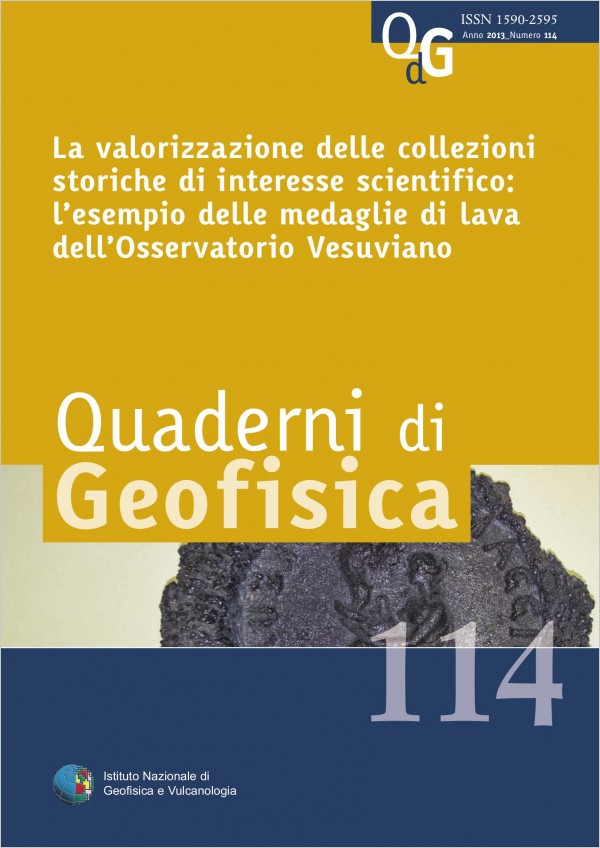La valorizzazione delle collezioni storiche di interesse scientifico: l’esempio delle medaglie di lava dell’Osservatorio Vesuviano
Main Article Content
Abstract
In this paper the Osservatorio Vesuviano collection of lava medals is presented and described as a whole, along with the information regarding each component item, making available this cultural heritage also to a non-specialists public. Moreover, the recent history of Vesuvius has been analyzed in order to find any possible element of correlation between the eruptive activity of the volcano and the production of lava medals. The collection, kept in the oldest volcano observatory in the world, is part of a much wider and very rich cultural estate of great scientific, artistic and historical interest. The collection, which has never been exposed due to lack of information on the component items, represents an important account of the life around the volcano and an invaluable record of a three-centuries long history of Vesuvius activity. It is also an almost unique collection, as the only other similar one is presently exposed at the Mineralogical Museum of the Federico II University of Naples. The uniqueness of this collection was already understood by early collectors, which mainly grouped the samples that celebrated historical, cultural and artistic events of that time. However the production of medals has been always strongly conditioned by the availability of fluid flows of lava, which can be easily sampled and moulded but not continuously produced by the volcano. A new systematic organization and classification of the medals is presented in this paper allowing the description of many aspects of the history of Vesuvius and its volcanological observatory, and the timing of many events that characterized the life of the Parthenopaean interland.
Article Details
Section
Article

This work is licensed under a Creative Commons Attribution 4.0 International License.

